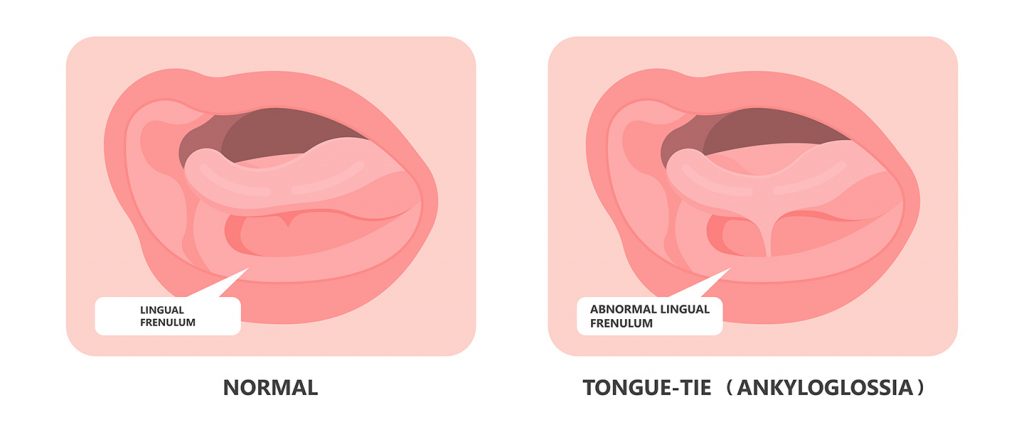Tongue-Tie Release
Tongue-tie, or ankyloglossia, occurs in nearly 5% of newborns. It is a genetic condition, and affects more boys than girls, with different levels of severity.
How does tongue-tie happen?
Tongue-tie happens when the lingual frenulum – a band of soft tissue that anchors the tongue to the bottom of the mouth – is too short or tight. As this restricts tongue movements, your baby will experience difficulties during breastfeeding. Babies with tongue-tie often don’t feed well, which can affect their nutrition.
Left uncorrected in adults, tongue-tie can make activities such as eating, breathing and kissing especially challenging. All this can reduce their physical health and self-esteem.
Go on, stick your tongue out

Your tongue can’t reach past your lower front teeth?

Your tongue appears saw- or heart-shaped?

Your tongue can’t reach upwards to touch your upper teeth?

Your tongue can’t move from side to side on your upper teeth?

How does tongue-tie affect quality of life?
- Speech problems. When your tongue cannot reach the roof of your mouth, you’re likely to experience difficulties with words that contain “t”, “d”, “s”, “z”, “n” and “l”. It may diminish your willingness to communicate with others.
- Dental problems. When your tongue cannot help to brush food debris off your teeth and to keep the mouth clean, decay and inflammation may result. Alignment issues due to tongue-thrust – when your tongue presses too far forward in the mouth – such as open bite may occur.
- Obstructive sleep apnoea (OSA). Tongue-tie can lead to restricted airways, hence increase risk of OSA, and diminish sleep quality.
- Temporomandibular Joint (TMJ) disorder. In order to adapt to the inconveniences of tongue-tie, you may develop an incorrect swallowing pattern. This can lead to alignment issues, as well as TMJ disorder, which can cause pain in the neck and jaw, for example.
Why consult an ENT specialist
An ENT specialist can assess your conditions for tongue-tie and its severity, and suggest treatment options to correct it. One option is frenectomy, a surgical procedure where the lingual frenulum is cut. It is also performed on infants without sedation required. If there’s some discomfort, medications for anesthesia may be prescribed before surgery.

What does tongue-tie surgery involve?
A consultation with your ENT specialist will be done to evaluate your habits in eating and speaking, followed by a physical examination of your mouth.
Known as frenectomy, or tongue-tie division, where the band of tissue between your tongue and the floor of your mouth is cut. This allows the tongue to move around without restriction.
This takes about 15 seconds to perform and results are immediate for babies – they can breastfeed after the surgery. Any discomfort is likely to subside the third day after the procedure.
For adults, however, swelling is normal on the floor of your mouth or under your tongue. Apply a dampened gauze over the area with good pressure for 2 hours. Complications, which can range from bleeding to scarring, are rare.
For those whose frenulum is thicker, a frenuloplasty may be recommended. This is performed with general anesthesia and requires stitches.
